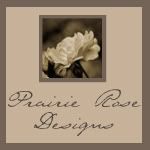As you will recognize, we have a neck and fingerboard assembly, the top (minus F holes, saddle, and base bar), the ribs with linings and blocks (minus end pin), and the back (minus sound post).
Once all the tuning is done, the F holes are cut and the base bar is applied and some final tuning is done prior to gluing all the pieces together.
The next time we visit we should see the whole instrument together and probably in process of applying the layers of varnish.
We'll start with the ribs this week. If you remember, the ribs started out as just strips of Ancient Kauri a couple of months ago when I first picked out the wood. Here they are cut to size and bundled together.
In order to give these strips of wood their shape, they need to be applied to a form. That form also has to have some anchor blocks as you see in the diagram above. Specifically, there are corner, top, and bottom blocks which the ribs are attached to. The process is to first attached raw blocks to this special form and then shape them correctly so we have a whole violin shape to attached the ribs to.

Here we see the initial blocks temporarily attached to the form.

The correct inner and outer shapes are then traced from a pattern onto the blocks and then the corners are cut to the pattern and the top and bottom blocks are trimmed to their external shape.

Here we see the completed blocks on the form ready for the ribs to be shaped against them.
The six rib pieces were steamed to make them pliable and then bent against the completed form. You end up with the six pieces with the correct curvature.
A number of special clamps are then applied as each rib is attached to the corner blocks and/or the end blocks.
Here is the completely attached ribs to the blocks still in the form.
With the ribs on the form, we have the right shape, but not a very sturdy structure. To give it a frame, strips of lining get formed to the inside of both the top and the back edges. Here is one side of linings being glued to the ribs and clamped on by clothes pins while the glue dries.Once both edges have the linings attached, the blocks are all cut back on the interior to create more volume on the inside. Some luthiers have left the corners untrimmed, but creating more volume makes a lot more acoustical sense. The linings are then cut down and sanded to create a very smooth ridge and some width on each edge for the top and back pieces to adhere to when glued.

Cutting of the linings
This is what you end up with.

Absolutely beautiful!
Let's move to the top and the back plates. The last time we saw these, they were well along in their external shaping and the purfling groove was cut. Here you can see the purfling being inlaid.
You can see the purfling pretty clearly in this image of the top. Amazing detailed work.
 The interior of the top and back plates were still pretty thick and flat that last time we visited. These have now been rough scraped and are in the process of being finely planed to just the right thickness. This is done with the good ole chisel first and produces quite a bit of shavings. To get the correct initial thickness (ie. not too deep), Martin drills down to a safe thickness in 300 points on the surface creating some holes which also make the chiseling and scraping a little easier.
The interior of the top and back plates were still pretty thick and flat that last time we visited. These have now been rough scraped and are in the process of being finely planed to just the right thickness. This is done with the good ole chisel first and produces quite a bit of shavings. To get the correct initial thickness (ie. not too deep), Martin drills down to a safe thickness in 300 points on the surface creating some holes which also make the chiseling and scraping a little easier.
Initial holes drilled via a pattern above and the initial chiseling below.

Martin uses a special jig that the plates fit into while he does the chiseling and scraping.

You can see the rough scraping in this image pretty clearly. The Ancient Kauri is especially challenging as it likes to tear when you scrape against the grain.
Once the chiseling gets down to the rough thickness, the rest of the scraping is done with the smallest wood plane I have every seen!
So from here, the scraping will get finished and some initial tuning will be done. Then the F holes will need to be cut and the base bar inserted. Then final tuning will be done and the pieces will be ready to be assembled. For the fun of it, we put the pieces together using the positioning pins just to see how it will look.
Pretty cool to finally hold the whole box in my hands!
Sheer delight as we look at the whole instrument with the neck held in place.
Just for kicks, we took out Martin's own fiddle and tried out the new CodaBow Joule violin bow I got for when the instrument is done. More on the bow and other accessories I got in another post.






























No comments:
Post a Comment